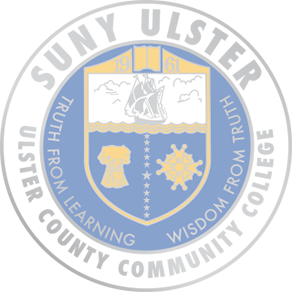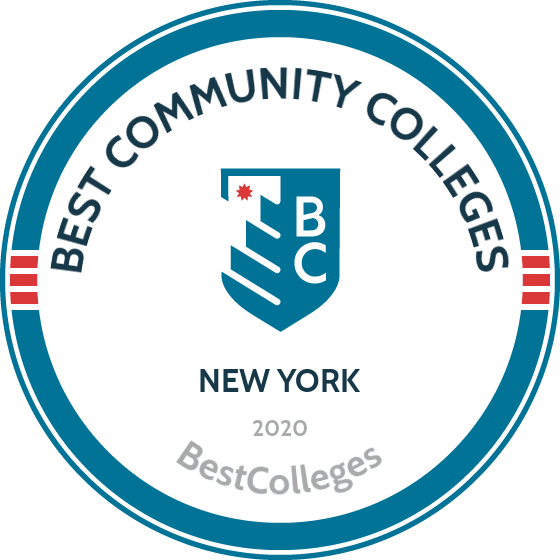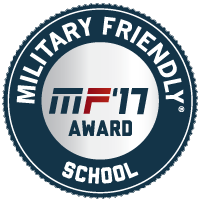Courses
220 courses found when searching within the Fall 2024 semester.
page = 11Intermediate Spanish I
SPA 201
Improvement in speaking, reading, and writing Spanish is stressed in this course for students who can already communicate orally in simple Spanish and who have a good knowledge of basic Spanish grammar. Students read articles from Spanish newspapers and magazines and simple short stories. In addition, they review Spanish grammar and practice, applying it in conversations, reports, and compositions. Recommended: Three to four years of high school Spanish; the equivalent of SPA 102, SPA 111, or SPA 115; or by advisement.
Adv Spanish Grammar/Comp
SPA 208
Students review and consolidate their understanding of Spanish grammar to improve their ability to express themselves in written Spanish. The course is conducted entirely in Spanish. Prerequisite: SPA 202 or by advisement.
Introduction to Acting
THE 110
A practical introduction to the actor's technique and performance skills, this course aspires to nurture a supportive and stimulating environment in which students can explore and practice the elements and disciplines necessary to begin formal training as an actor. The focus in this course will be on physical and vocal exercises and improvisation, as well as basic text and character analysis. By utilizing these tools, cultivating powers of observation, and stressing and applying the actor's goal to define the specific intention rendered by the most effective action, we will methodically work toward the mapping of the character's journey through the text. This course offers methods geared to help students get the most out of themselves and disciplines required to train their "acting instruments" (body and voice) to be more responsive, so that they possess a wider range of communications skills. The goal of the course is to introduce the student-actor to the technique necessary to master the basic discipline of truthful behavior in imaginary circumstances.
Veterinary Medical Terminology
VTS 111
This course presents a study of basic veterinary medical terminology. The primary purpose is for the students to be able to analyze a word, to determine its meaning and to use it properly, therefore preparing the student for future classes in veterinary science.
Pet CPR and First Aid
VTS 147
This course provides an overview on how to manage a life-threatening medical emergency that may occurs with dogs and cats in your cat. It focuses on how to keep the animal alive or prevent its condition from getting worse prior to arriving at a veterinary facility. The course topics include safety techniques for working with sick/injured animals, proper restraint of an injured or sick animal, assessment of vitals (temperature, pulse, respiration, crt) to determine normal vs abnormal, emergency first aid for common medical emergencies and CPR for dogs and cats.
Vet Clinical Calculations
VTS 148
Students will study the basic mathematical techniques critical to proper calculation and administration of medications to their animal patients. They will also attain the skills to understand the importance of accuracy in calculations, proper use of units, methods of administration, and to become precise in all those areas. Students will learn to become competent in calculations and the use of oral, parenteral, and intravenous medications. Prerequisite: MAT 100 or higher with a grade of C or better or by placement test
Intro-Veterinary Science Tech
VTS 149
Students will learn what it means to be a veterinary technician. This course will cover the New York State licensing law, scope of practice, the law and ethics of veterinary practice, controlled substances, veterinary-specific medical terminology, medical record systems and use legally defensible medical records, the human-animal bond, client and staff interactions, humane euthanasia and grief, OSHA safety, and inventory management basics.
Animal Nutrition
VTS 150
The complex nutritional requirements of companion animals ranging from exotic pets to large farm animals are presented in this course. This course covers both the theoretical and practical aspects of animal feeding through classroom lectures and student projects. Diseases related to nutrition deficiencies and fluid therapy are studied.
Parasitology & Microbiology
VTS 151
This course presents a brief comparative study of the various classes of microorganisms pathogenic to companion animals and livestock. A majority of the course material covers pathogenic parasites. In the lecture portion, life cycles, diagnosis and identification, and prevention, control and treatment strategies are studied. In the laboratory portion, aseptic technique, preparation and care of surgical materials, and preparation and identification of specimens and pathogens are studied. 3 hr. lect; 3 hr. lab. Prerequisite: BIO 100, VTS 111, VTS 149
Animal Anat & Physiology
VTS 152
The normal structure and function of the animal body through detailed studies of selected organ systems is studied in this course. In the lecture portion, students study the relationship between structure and function of animal bodies of exotics, carnivores, and herbivores through a detailed analysis of selected organ systems. Laboratory work emphasizes hands‐on experiences using models, specimens and dissections of representative species. 3 hr. lect.; 3 hr. lab. Prerequisite: BIO 100, VTS 111, VTS 149
Veterinary Clinical Pathology
VTS 155
Students will study the physiology, clinical presentations and treatments of common metabolic disorders. Emphasis will be placed on the laboratory analysis of bodily fluids, which include blood, urine, effusions, and cytological samples and using the diagnostic tools of chemistry, hematology and microbiology to diagnose disease. 3 hr. lect; 3 hr. lab. Prerequisite: BIO 100, VTS 111 and VTS 149. Co-requisite: VTS 151, VTS 152.
Restraint and Handling
VTS 159
Students will study restraint and handling techniques used for large, small, and exotic animals. This course will cover selection of the correct restraint techniques for the patient and application of the minimum amount of restraint necessary to complete the procedure. Different types of restraint devices, and when they are appropriate to use, will also be discussed. 3 hrs. lab.
BehavioralMedicine for Animals
VTS 250
Normal and abnormal behavior of several domestic species of animals will be studied. Students will also study preventative behavioral medicine and will learn the tools needed for obtaining a thorough history as required for the diagnosis and treatment of behavior problems commonly encountered in the clinical setting. Common pharmacological treatments, and when best to use them, are discussed as well. 2 hr. lect.
Vet Anesthesia & Pharmacology
VTS 253
This course is designed for students entering the second year of the Veterinary Technology Program. Students will attend a 3-hour lecture and their clinical practicum each week. Emphasis is placed on all facets of anesthesia including the pre-anesthetic period through recovery. Injectable drugs as well as inhalation anesthetics are covered along with analgesic medications and other drugs affecting most major body systems. Drug kinetics, adverse reactions, labeling, dispensing, recording, and proper handling of various drugs is also included. 3 hrs. lect. Prerequisite: BIO 100, VTS 111, VTS 148, VTS 149, VTS 150, VTS 151, VTS 152, VTS 155, and VTS 159 Corequisite: VTS 256, VTS 262, VTS 263
Veterinary Diagnostic Imaging
VTS 254
Veterinary Diagnostic Imaging will cover multiple diagnostic modalities utilized in veterinary medicine such as Magnetic Resonance Imaging (MRI), Computed Tomography (CT scan), Radiography, Contrast Studies, Ultrasonography, Nuclear Medicine, and Fluoroscopy. Emphasis on patient positioning, exposure settings, film processing, and radiation safety will be covered. Students will work with a digital dental x-ray machine, digital tabletop x-ray machine and ultrasound machines during the lab period. 1 hr. lect; 2 hr. lab. Prerequisite: VTS 152
Sm Animal Diseases & Nursing
VTS 256
Students will understand how to assess normal and abnormal small animal vital functions, vaccine protocols, proper administration and use of medications, recognize common disease and provide care for healthy and hospitalized patients. The importance of surgical nursing and the skills that are required to assess a patient’s medical status as well as performing and maintaining aseptic technique in the surgical suite and in the preparation of patients for surgery. In addition, veterinary dentistry, which includes, cleaning, extractions, repair of a patient’s teeth and other diseases of the oral cavity will be covered. 3 hr. lect Prerequisite: BIO 100, VTS 111, VTS 148, VTS 149, VTS 150, VTS 151, VTS 152, VTS 155, and VTS 159 Corequisite: VTS 253, VTS 262 and VTS 263 By advisement only.
Exotic Animal Care & Diseases
VTS 258
This course is aimed to teach the basic medicine, anatomy, physiology, and husbandry of exotic pet species for the licensed veterinary technician. Students will be expected to identify normal healthy behaviors, as well as abnormal clinical signs. This course will cover recognition and treatment of common diseases (including zoonotic diseases), species differences, husbandry, as well as a variety of nursing skills (diagnostics, restraint and handling, venipuncture, anesthesia, and more) for both healthy and unhealthy exotic animals. Species to be discussed are species of birds, reptiles, ferrets, rabbits, rodents, amphibians, and other small mammals 2 hrs. lect.
VTNE Preparation Course
VTS 261
This course is designed to prepare students to take the Veterinary Technology National Exam which is required for licensure. Students who complete this course have an 85-95% pass rate on the VTNE. The course material is online but students will meet with an on-campus SUNY Ulster instructor once a week to ask questions and discuss their progress in the course. Prerequisites and co-requisites: Minimum completion of 40 credits of VTS courses with a C or better.
VET Anes & Pharma Preceptrship
VTS 262
Students are placed in a veterinary hospital to complete the AVMA required small animal surgical/anesthesia clinical skills. Emphasis is on all facets of anesthesia including the pre-anesthetic period through recovery. Injectable drugs as well as inhalation anesthetics are covered, along with analgesic medications and other drugs affecting most major body systems. Drug kinetics, adverse reactions, labeling, dispensing, recording, and proper handling of various drugs is also included. Students will have hands-on experience during their clinical rotation performing all required skills found in Assessing Essential Skills of Veterinary Technology Students in the categories of Pharmacology and Anesthesia. Preceptorship: 280 hours Prerequisite: BIO 100, VTS 111, VTS 148, VTS 149, VTS 150, VTS 151, VTS 152, VTS 155, and VTS 159 Corequisite: VTS 253, VTS 256, and VTS 263
Small Ani Dis&Nur Precptrshp
VTS 263
Students are assigned to a SUNY Ulster Veterinary Technology Program approved veterinary hospital to complete AVMA required skills in surgical nursing, emergency medicine, dentistry and small animal care. The students will learn how to assess normal and abnormal small animal vital functions, understand vaccine protocols, proper administration and use of medications, recognize common diseases and provide care for healthy and hospitalized patients. Prophylactic dental care will also be performed. Students will have hands-on experience during their clinical rotation performing all required skills found in Assessing Essential Skills of Veterinary Technology Students in the category of Medical and Surgical Nursing. Preceptorship: 280 hours Prerequisite: BIO 100, VTS 111, VTS 148, VTS 149, VTS 150, VTS 151, VTS 152, VTS 155, and VTS 159 Corequisite: VTS 253, VTS 256, and VTS 262
page = 11




